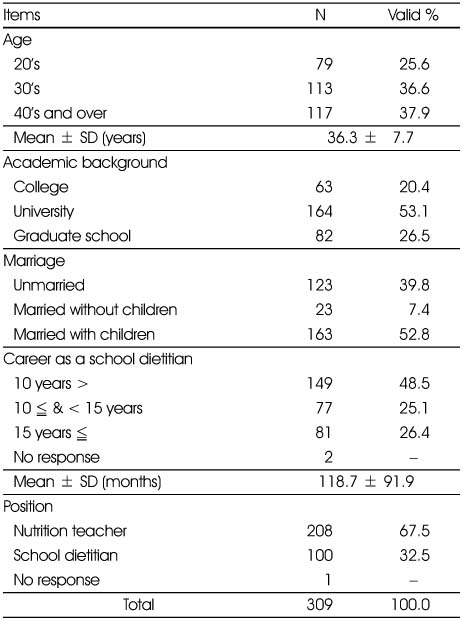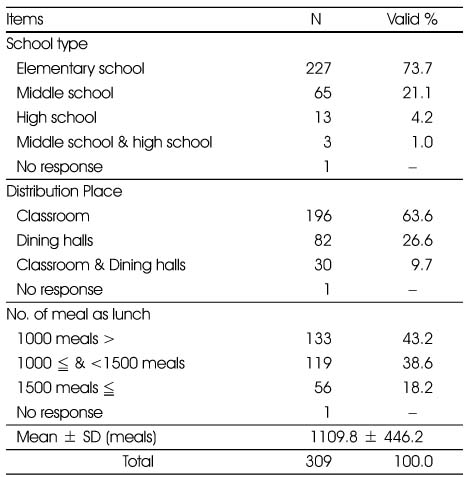References
1. Adelmann PK. In : Sauter SL, Murph LR, eds. Emotional labor as a source of job stress. Organizational risk factors for job stress 1995. Washington DC: American Psychological Association; 371–381.
2. Ashforth BE, Humphrey RH. Emotional labor in service roles: The influence of identity. Acad Manage Rev 1993. 18(1)88–115.
3. Brotheridge CM, Lee RT. Development and validation of the emotional labor scale. J Occup Organ Psychol 2003. 76(3)365–379.
4. Choi HS, Kim OH, Lim HC. The effects of job characteristics and individual emotional characteristics to emotional labor in the service industry. Daehan J Bus 2008. 19(5)1943–1966.
5. Choi HS, Lim HC, Jeong MG. The determinants of employees' emotional labor in call centers. Korean Corp Manag Rev 2008. 15(2)53–68.
6. Choo HJ, Kim HS, Jun DG. The effect of a salesperson's affectivity and the performance stressor on emotional labor at the department stores. J Korean Soc Clothing Text 2010. 34(3)411–423.
7. Chu KHL. The effects of emotional labor on employee work outcome 2002. irginia Polytechnic Institute and State University; 149–154.
Ph.D thesis.
8. Davis MH. Measuring individual differences in empathy: Evidence for a multidimensional approach. J Pers Soc Psychol 1983. 44(1)113–126.
9. Davis MH, Mitchell KV, Hall JA, Lothert J, Snapp T, Meyer M. Empathy, expectations, and situational preferences: Personality influences on the decision to participate in volunteer helping behavior. J Pers 1999. 67(3)469–503.
10. Diefendorff JM, Grosserand RH. Understanding the emotional labor process: A control theory perspective. J Organ Behav 2003. 24(8)945–959.
11. Grandey AA. Emotion regulation in the workplace: A new way to conceptualize emotional labor. J Occup Health Psychol 2000. 5(1)95–110.
12. Goffman E. The presentation of self in everyday life 1959. New York: The overlook press; 309.
13. Hatfield E, Caccioppo JT, Rapson RL. Emotional contagion Cambridge: Cambridge University Press; 5.
14. Hess U, Blairy S, Philippot P. Facial reactions to emotionalfacial expressions: Affect or cognition? Cogn Emot 1998. 12(4)509–531.
15. Hochschild AR. The managed heart: Commercialization of human feeling 1983. Berkeley: University of California Press; 7.
16. James N. Emotional labour: Skill and work in the social regulation of feelings. Sociol Rev 1989. 37(1)15–42.
17. Jung HY, Kim HA, Yang IS. Verification on the effectiveness of emotional leadership of branch managers on organizational performance in contracted foodservice company : Through the construction of a structural equation model. J Korean Home Econ Assoc 2007. 45(4)109–120.
18. Kim HA. Contribution of emotional labor to job stress of dietitians in school foodservice. Korean J Food Cookery Sci 2010. 26(1)41–53.
19. Kim HA, Jung HY. A verification on the effectiveness of middle managers' emotional leadership in foodservice management companies. J Korean Soc Food Sci Nutr 2007. 36(4)488–498.
20. Kim MJ. A comparative study of the consequences of emotional labor between Korea and USA : Focused on the relationship between the hotel employees' emotional labor and their job stress. Korean J Hosp Adm 2006. 15(1)35–67.
21. Kim SP. The effects of individuals' characteristics, interaction characteristics, and control mechanisms on emotional labor strategies. Korean Manag Rev 2007. 36(2)355–384.
22. Kruml SM, Geddes D. Exploring the dimensions of emotional labor: The heart of Hochschild's work. Manag Commun Q 2000. 14(1)8–49.
23. Kuenz J. In : Fish S, Jamerson F, eds. Working at the rat. Inside the mouse: Work and play at Disney World 1995. Durham, NC: Duke University Press; 110–162.
24. Leidner R. Fast food, fast talk: Service work and the routinization of everyday life 1993. Berkeley: University of California Press; 220–227.
25. Liu Y, Hochwater W, Kacmar C. Dispositional antecedents and consequences of emotional labor at work. J Leadersh and Organ Stud 2004. 10(4)12–25.
26. Liu Y, Prati LM, Perrewe PL, Ferris GR. The relationship between emotional resources and emotional labor. J Appl Soc Psychol 2008. 38(10)2410–2439.
27. Martin SE. Police force or police service? Gender and emotional labor. Ann Am Acad Pol Soc Sci 1999. 561(1)111–126.
28. Mehrabian A, Epstein N. A measure of emotional empathy. J Pers 1972. 40(4)525–543.
29. Miller KI, Stiff JB, Ellis BH. Communication and empathy as precursors to burnout among human service workers. Commun Monogr 1988. 55(3)250–265.
30. Mills T, Kleinman S. Emotions, reflexivity, and action: An interactionist analysis. Soc Forces 1988. 661009–1027.
31. Morris JA, Feldman DC. The dimensions, antecedents, andconsequences of emotional labor. Acad Manage Rev 1996. 21(4)986–1010.
32. Park DS, Chun MG, Chung SH. A conceptualization and antecedents of emotional labor. J Organ Manag 2005. 29(4)133–167.
33. Park SE. The effects of emotional dissonance on the employee's job attitudes and the moderating role of job autonomy and social supports. Korean Manag Rev 2009. 38(2)379–405.
34. Thoits PA. The sociology of emotions. Annu Rev Sociol 1989. 15317–342.
35. Trougakos JP, Beal DJ, Green SG. Making the break count: An epsodic examination of recovery activities, emotional experiences, and positive affective displays. Acad Manage J 2008. 51(1)131–146.
36. Verbeke W. Individual differences in emotional contagion of salespersons: Its effect on performance and burnout. Psychol Mark 1997. 14(6)617–636.







